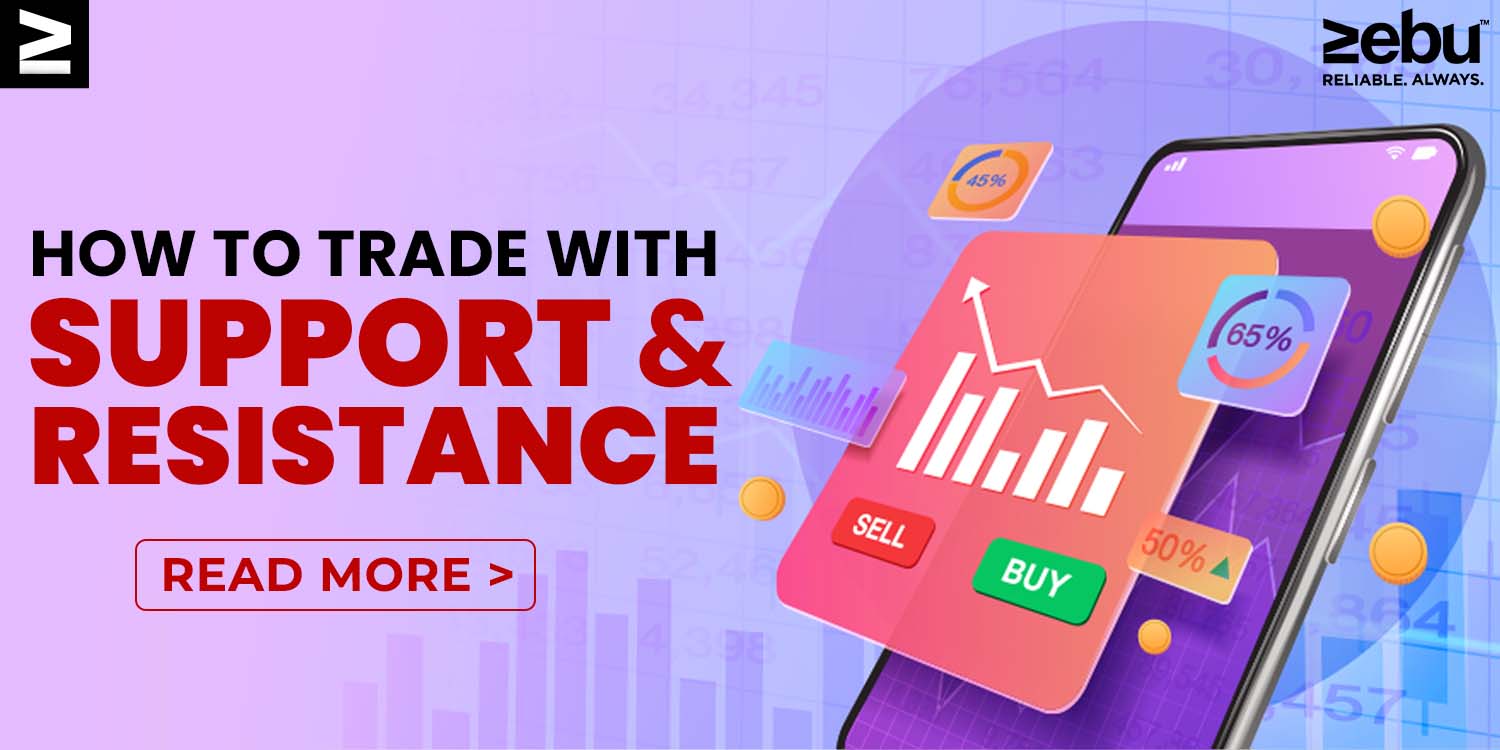
Title Page Separator Site title
Technical analysts use a number of rules to predict how much stocks will go up or down in the future. Once you know what a trend is, the next important idea in technical analysis is support and resistance.
The theory of support and resistance
According to technical analysis, when the price of a stock reaches certain predetermined price points, it tends to stop and move in the opposite direction.
Support level: This is the point where the price of a stock stops going down. It’s possible that the price will go up instead of down. At this point, it is likely that the demand from buyers will be much higher than the demand from sellers.
Resistance level: The opposite of a level of support is a level of resistance. It is a price level (ceiling) above which the stock price is not expected to rise. At this price, the market for this stock is better for sellers than it is for buyers.
What does support mean?
The support and resistance levels on a candlestick chart might help you figure out the target price at which to buy or sell. The support level is where the market expects more buyers than sellers. The price at which traders can expect to see the most buying interest in a stock is called the support level on the chart.
In a falling market, the support-resistance indicator, which is an important level market player to watch for, is often a sign to buy. The support line is formed when the price of a security goes down and the demand for shares goes up.
What is resistance?
On a candlestick chart, a price has reached the resistance level when there are more sellers than buyers. Resistance level is a price point on the chart where traders expect to sell as much of a certain stock as they can. It keeps the price from going up even more.
Since resistance is always higher than the current market price, it is often a sign to sell. In a bullish market, the resistance level is one of the most important things that traders pay close attention to. Support and resistance are, in a nutshell, the exact opposites of each other.
By looking at the support and resistance levels, the trader can get an idea of how the price of a stock will move. But there is always a chance that the stock price will go above these levels. When this happens, which happens often, a new level of support and resistance is set up.
If the support level is broken, the stock price will keep falling until it finds a new level to support it. Also, if the stock price breaks through the resistance level, it keeps going up until it hits a new resistance level.
Resistance and Support: How Reliable Are They?
Even though support and resistance can tell you when to buy or sell, you shouldn’t rely on them alone. Or, to put it another way, before deciding whether or not to buy or sell a certain stock, you should think about a number of other things.
When it comes to technical analysis,
Predicting the future price of a stock is the most important (and hard) part of analysis for a trader in the stock market. The next high (or low) price cannot be predicted with any level of reliability.
So, the idea of support and resistance is a good way to understand how prices change. Support and resistance levels help traders make decisions because they let them see patterns.
For example, if a trader sees that a stock has reached a support level, he could buy more shares. This is done so that the stock has a better chance of coming back. In a similar way, the trader may sell his shares and make money when the stock reaches a level of resistance.
When a stock’s price reaches these levels, you should always be careful because the area between the support and resistance levels is known to be very volatile.
Conclusion
Traders can use the idea of support and resistance to spot trends in the stock market and take advantage of them.
This doesn’t mean, though, that the stock will never go above a support or resistance level. The price of a stock can always go up or down. Also, as a trader, you shouldn’t make trades based only on these levels.
